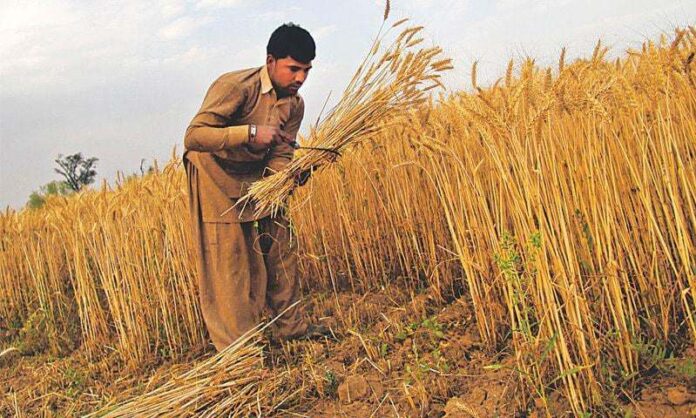While nobody can deny the fact that cities are the engines of economic growth and are essential for harnessing the benefits of agglomerations and economies of urbanisation, integrated and inclusive rural transformation is just as important as urban development in promoting sustainable and equitable growth. Urban development often receives more attention and resources than rural development — which must be given due priority in the development agenda — but not at the cost of rural development.
Neglecting rural areas can lead to a widening gap between urban and rural areas and can result in unsustainable migration towards cities, causing problems in both sectors. In cities, this can not only overburden the infrastructure and services in urban areas but also results in unplanned urban sprawl and the emergence of slums and shanty towns as well as distortions in the already under pressure property market.
Rural areas are still home to a significant portion of the global population. Without addressing the specific needs and challenges of rural communities, it is unlikely that the Sustainable Development Goals (SDGs) can be met. In Pakistan, according to the Population Census 2017, 63 percent of the population lived in rural areas, which are mostly dependent on agriculture, livestock, small agro-based enterprises, and basic skill-based occupations.
According to the Economic Survey of Pakistan 2022, 39 percent of the total labour force of the country is employed in agriculture, which contributes 22 percent of the national GDP. Despite the importance of rural areas in terms of population, employment, and share in GDP, the sector is plagued by low productivity, inefficiency, and stagnancy. A concentrated effort needs to be made in transforming the urban areas of Pakistan for sustainable progress.
The International Fund for Agricultural Development (IFAD) in its report, “Rural Development Report 2016,” describes rural transformation as a process that increases agricultural productivity, increases commercialisation, generates marketable surpluses, diversifies the cropping pattern and livelihoods, and increases off-farm employment and entrepreneurial prospects. The IFAD report also noted that agricultural GDP rises as labour is reallocated, and the report discovered — after analysing data from 86 countries — that GDP per capita rises as agriculture’s share of GDP and employment declines. Furthermore, as GDP per capita rises, the gap between agriculture’s share of GDP and agriculture’s share of employment shrinks.
In the case of Pakistan, agricultural productivity is almost stagnant, as in 1991, Pakistan’s per-worker agricultural productivity was US $2,137, which still hovered around US $2,634 in 2019. The share of agriculture in GDP was 23 percent in 1991 and was around 22 percent in 2022, and the share of agriculture in the workforce was 44 percent in 1991 and 39 percent in 2022, highlighting the stagnancy of agricultural productivity in Pakistan.
Pakistan requires a rural-inclusive transformation plan that can improve the livelihoods of rural residents while promoting economic development. The Rural Integrated Development Model (RIDM) can be a good policy option for Pakistan. The RIDM is a holistic approach to addressing the economic, social, and environmental challenges facing rural communities.
Urban development often receives more attention and resources than rural development — which must be given due priority in the development agenda — but not at the cost of rural development.
The RIDM approach typically involves a combination of different interventions such as microfinance, infrastructure development, capacity building, and community mobilization. Overall, the RIDM model is a comprehensive, community-based approach to rural development that aims to improve the standard of living and economic opportunities for people living in rural areas.
Micro infrastructure projects, microfinance, and rural integrated development programmes are all important tools for promoting economic growth and reducing poverty in rural areas. To be effective, these rural integrated development programmes must be designed and implemented with the specific needs and challenges of the local communities in mind. This requires working closely with local organisations and leaders to understand the unique strengths and weaknesses of the area and tailoring interventions accordingly.
In terms of policy recommendations, a nexus of public-private partnerships of governments and development organisations — such as Rural Support Programs (RSPs), NGOs, local communities, and microfinance banks — should be established which prioritise the provision of microfinance and implementation and monitoring of micro infrastructure projects in rural areas.
Initially, a pilot project may be implemented in a small number of selected model villages where an integrated package of rural development needs to be introduced which is comprised of micro infrastructure projects (such as tube wells, brick lining of water channels, solar-powered off-grid electricity generation for household and on-farm uses), provision of microloans for pesticides and high-quality seeds, and farm mechanisation.
In addition, cooperative farming for joint ownership of machinery and equipment like tractors, laser land-levellers, threshers, and combine harvesters on a community-wide level may be introduced coupled with community mobilisation and capacity building. The government should also consider prioritising development spending on infrastructure related to health, education, drinking water, sanitation, and farm-to-market roads in these model villages to ensure the integrated and holistic development of the community.
By taking a holistic, community-based approach and working closely with local organisations and leaders, these programmes can be designed and implemented in a way that is effective and sustainable. With the right policies and support, these measures can help improve the lives of millions of people living in poverty and transform and modernise the Pakistani countryside.






















